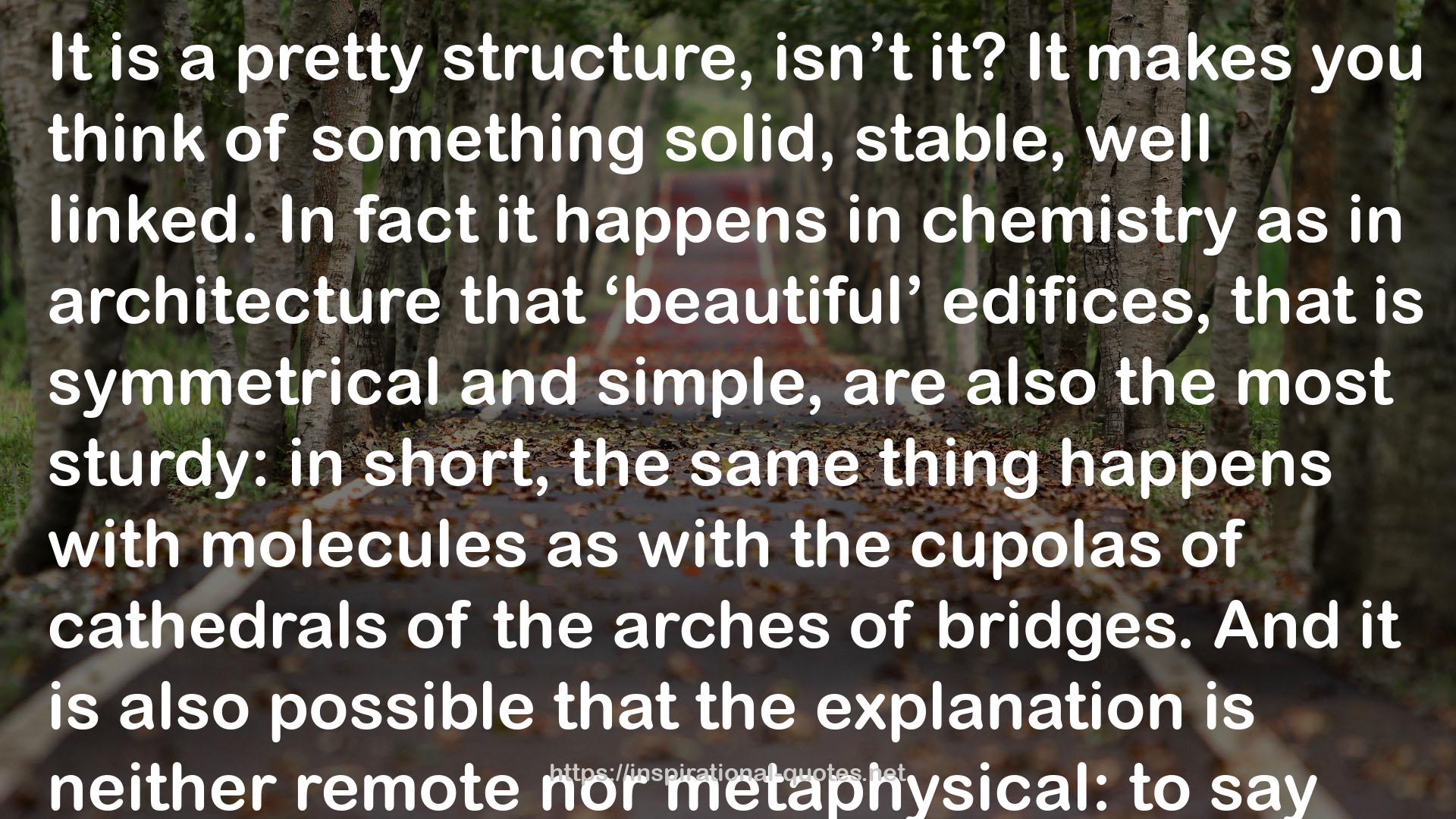" It is a pretty structure, isn’t it? It makes you think of something solid, stable, well linked. In fact it happens in chemistry as in architecture that ‘beautiful’ edifices, that is symmetrical and simple, are also the most sturdy: in short, the same thing happens with molecules as with the cupolas of cathedrals of the arches of bridges. And it is also possible that the explanation is neither remote nor metaphysical: to say ‘beautiful’ is to say ‘desirable’, and ever since man has built he has wanted to build at the smallest expense and in the most durable fashion, and the aesthetic enjoyment he experiences when contemplating his work comes afterward. Certainly, it has not always been this way: there have been centuries in which ‘beauty’ was identified with adornment, the superimposed, the frills; but it is probable that they were deviant epochs and that the true beauty, in which every century recognises itself, is found in upright stones, ships’ hulls, the blade of an axe, the wing of a plane. "
― Primo Levi , The Periodic Table
